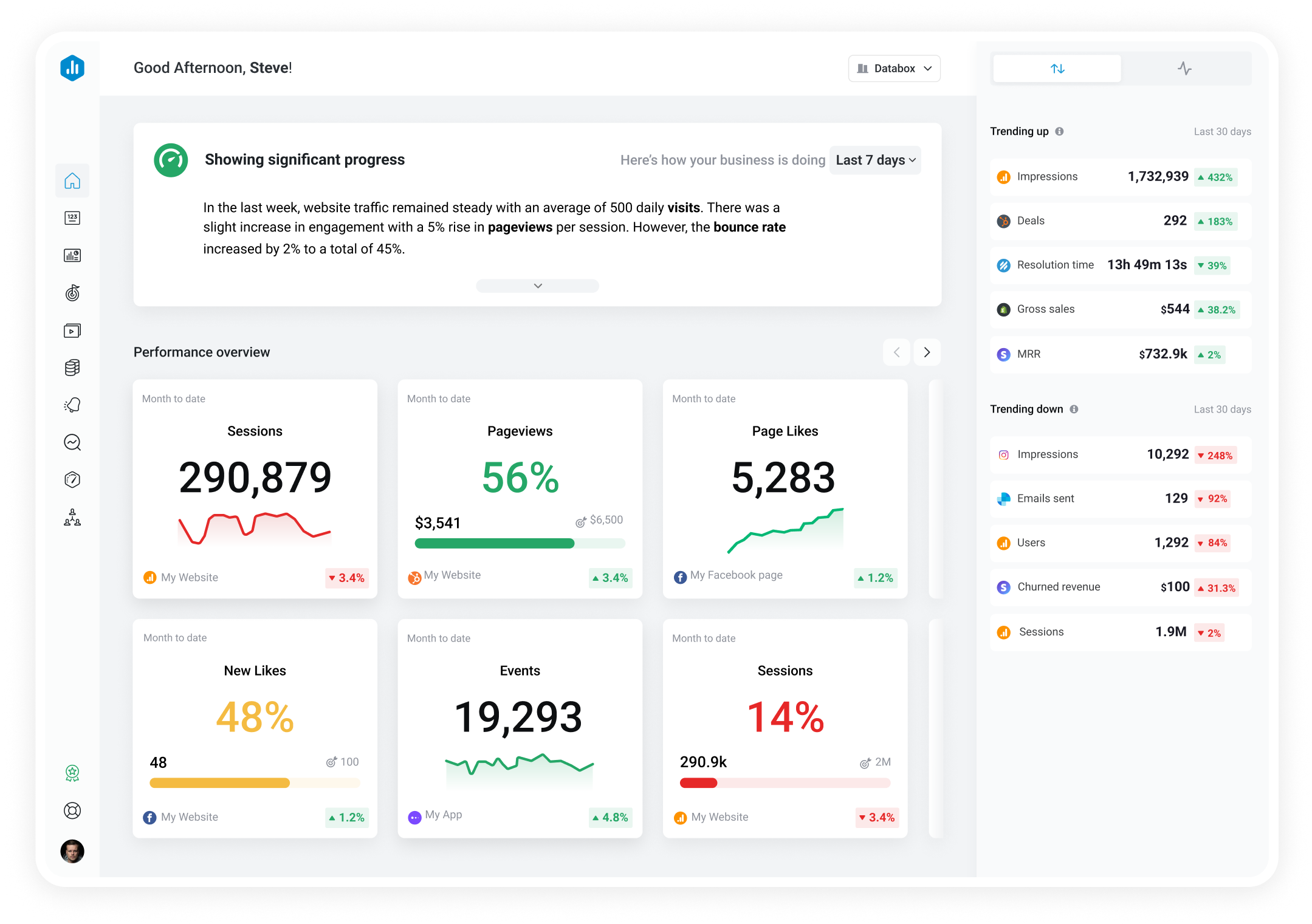Track all of your key business metrics from one screen
GET STARTED
 Microsoft Advertising
Spend by Ad
Microsoft Advertising
Spend by Ad Spend by Ad is a performance metric that displays the total cost of running individual ads. This metric helps advertisers to track and optimize their spending on specific ads for better ROI.
With Databox you can track all your metrics from various data sources in one place.

Used to show comparisons between values.
Databox is a business analytics software that allows you to track and visualize your most important metrics from any data source in one centralized platform.
To track Spend by Ad using Databox, follow these steps:
 Goals
Goals Scorecards
Scorecards Metric Digest
Metric Digest Metric Builder
Metric Builder Data Calculations
Data Calculations Performance Screen
Performance ScreenThis dashboard gives you an overview of all the key metrics in your Microsoft Advertising account

